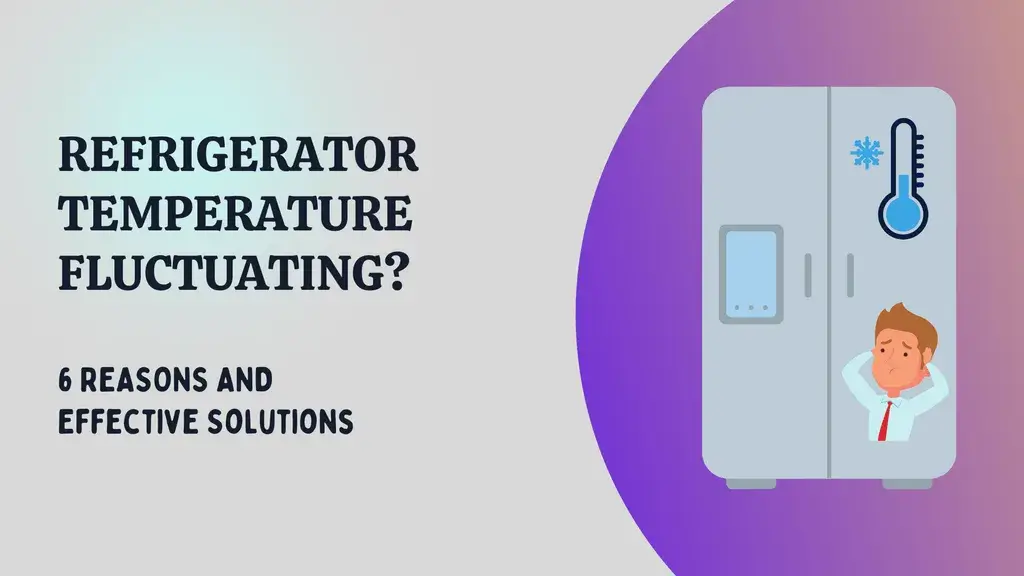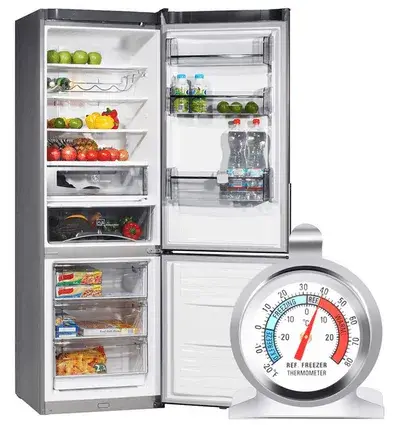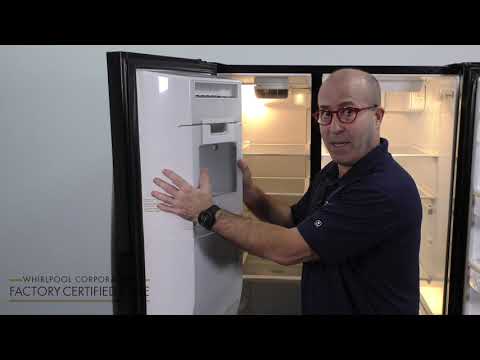A refrigerator’s temperature should stay relatively consistent, but this is not always the case. People have reported that their refrigerator’s temperature fluctuates wildly, sometimes going up and down by as much as 20 degrees Fahrenheit (11 degrees Celsius). This can be very frustrating, especially if you need to store food at a specific temperature. Refrigerator temperature fluctuation affects the food’s quality, making it either too cold or too hot. Sometimes the fluctuations can also lead to food being spoilt.
Refrigerator temperature fluctuations could be caused by several things. Some people think the fluctuations are due to the electricity in their homes. In contrast, others believe that it has something to do with the mechanical parts of the appliance.
If you’re experiencing problems with your refrigerator’s temperature fluctuations and wondering what causes a refrigerator temperature to fluctuate. Fasten your seat belt. I’ll discuss all the possible reasons behind this and suggest some fixes that you can apply to rectify them.
Table Of Contents

What is the ideal normal fridge temperature?
The ideal fridge temperature range is between 34°F and 40°F (1°C and 4°C), according to the University of Nebraska-Lincoln. The US Food and Drug Administration also recommends keeping refrigerator temperature around 37 degrees Fahrenheit. This temperature helps to maintain freshness and keep food from spoiling. It’s also important to note that the ideal fridge temperature may vary depending on the type of food you’re storing.

However, some people prefer their food colder, while others like it warmer. The best way to determine what temperature is right for you is to experiment with different settings and see what keeps the food as you like it. Please ensure your refrigerator is in an area that isn’t too warm or too cool. The ideal spot for a fridge is in a room that stays between 50 and 70 degrees Fahrenheit.
What causes a refrigerator temperature to fluctuate, and how to fix it?
A fridge is a perfect appliance for keeping food cold. But it can be really frustrating when your fridge temperature keeps fluctuating, and food starts to spoil. This may be caused by several factors, including refrigerator build, its insulation, and how it is installed. Understanding why it’s happening can help you to take steps to remedy the situation. Here are the most common reasons why your refrigerator temperature keeps changing and fix the issue:
#1. Compressor Coils
A dirty condenser coil is one of the most common reasons for fridge temperature fluctuations. If the coil is dirty, it will not be able to properly absorb and release heat. This will cause the fridge compressor to work harder than necessary and result in temperature fluctuations. If you suspect your fridge’s temperature is affected by a dirty condenser coil cleaning the coils will help the refrigerator run more efficiently.
The good news is that cleaning the condenser coil is a relatively easy task. There are a few different ways to clean the coils on your fridge. The easiest is to remove the panels on the back of the refrigerator and use a vacuum cleaner or coil brush to clean them off. If you have a lot of dirt or grease build-up, you can also use a degreaser or soap and water solution. Rinse any cleaning solution thoroughly, and let the coils dry before putting the panels back into place.
See if the temperature stabilizes; if it doesn’t maintain the actual temperature required, you can try the following solutions.
#2. Broken Evaporator Fan
If the evaporator coil fan is broken, it can cause temperature changes in a refrigerator. Double-check if the fan is broken to ensure this is the case. To do this, unplug the fridge and remove the back panel. Look for the fan and see if it’s spinning. If it’s not, the fan is likely broken and needs to be replaced.
If the fan is spinning, you can try a few other things before replacing it. Sometimes the blades on the fan can get bent or dirty, which can cause them to stop working properly. Try cleaning or straightening the blades to see if that fixes the problem. You can also try lubricating the fan motor bearings with oil or grease to see if that helps.
#3. Faulty Door Seal
If the refrigerator door isn’t sealing properly. In that case, it can cause warm air to enter the fridge and make the temperature fluctuate. To test for a proper seal, close the door on a piece of paper. The seal is not in fair condition if you can pull the paper out easily. You can do a few things to fix a faulty door seal on your fridge.
One option is to adjust the seals themselves. Ensure that the seals are properly aligned and that no debris or objects are blocking them. You can also try using a weatherstrip or foam tape around the edge of the door to create a tighter seal. Also, check that the gasket is in good condition and free of dirt, dust, and food particles. If it’s dirty, clean it with a mild detergent and water. If there is a lot of condensation inside the refrigerator door, wipe it off with a soft cloth.
If these measures don’t work, you may need to replace the seals on your fridge door. You can find replacement seals on the manufacturer’s website or at most home improvement stores. It should come with instructions so you can replace it yourself.
#4. Thermostat Malfunction
The thermostat is the temperature sensor that turns the fridge on and off to maintain the temperature. If the refrigerator’s temperature fluctuates, the thermostat may have gone bad. If you determine that the fridge’s thermostat is at fault, there are a few things you can try before replacing it.
Sometimes, dust or other debris can get caught in the mechanism and prevent it from working properly. Try gently cleaning it with a soft cloth and see if that fixes the problem. Also, check the wires from the sensor, and ensure wires are connected properly, and there is no damage to the wiring.
If cleaning the thermostat does not fix the problem, you must replace it.
#5. Blocked Airflow
Another ordinary cause of this problem is blocked airflow. If something is blocking the refrigerator’s airflow, it will not be able to cool down properly. This can lead to inconsistent internal temperature and even food spoilage.
There are a few things you can do to try to fix the problem before calling a professional. You should check the vents on the back of the fridge to ensure that nothing is blocking the vents and have ‘breathing room’ on all sides. You can also try cleaning the back of the refrigerator with a vacuum cleaner.
#6. Door Opening and Closing
Your refrigerator door is opened and closed constantly? You may be surprised that opening the door frequently could be causing your food to spoil faster. The cold air escapes every time you open the fridge, and the warm air enters. This can cause fluctuations in temperature, leading to food spoilage. To keep your food fresh for as long as possible, you should limit the number of times opening the fridge door and stop holding the fridge door open for too long.
Temperature Fluctuation still not solved?
If you still can’t determine the cause of the fluctuating temperatures. In that case, it’s best to call a technician to help you troubleshoot it.
You can find refrigerator repair professionals through online directories or by asking friends and family for referrals. Once you’ve found a few potential candidates, ask them about their experience, training, and licensing. Also, ask for references and reviews from past clients.
Final Thoughts
In conclusion, a refrigerator’s temperature will fluctuate for several reasons. By understanding the causes, you can take steps to fix the problem and keep your food safe and fresh.
Sometimes it can be fixed easily with some troubleshooting, but other times it might require a professional. If you’re having trouble getting your fridge to stay at the correct temperature, try some of these tips and see if they help. Knowing how to deal with a temperature that’s too warm or too cold can help keep your food fresher for longer.
